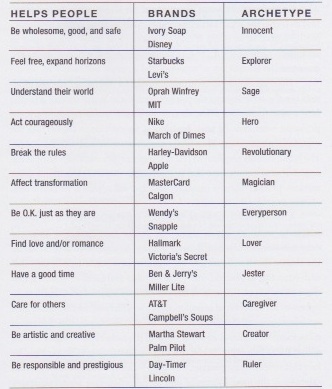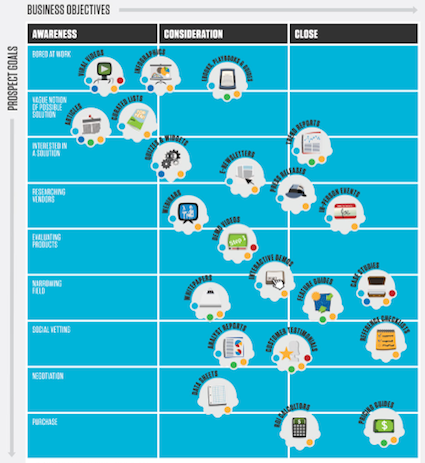“Facebook enables brands to find consumers in a place where they’re already spending a great deal of time. It is also highly precise: I can target users by location, language, education, employment, age, gender, marital status, their likes and interests and the size and profile of their list of friends,” says Sarah Blackman, digital planning and innovation director at Young & Rubicam in Berlin. (SOURCE: http://www.momentumreview.com/uk/how-facebook-stole-our-brands)
“At the end of the day everyone has the same amount of data because data is just people doing stuff. Converting that into insight is the point; that’s where it turns to magic,” Unilever CMO Keith Weed highlights the importance of having minds on the team who are looking for actionable points of departure within the data. (SOURCE: http://www.digiday.com/brands/brands-at-ces-say-dont-be-seduced-by-data/)
THE CLIMATE INTO WHICH SOCIAL MEDIA ANALYSTS ENTER: A host of technology companies and techno-geeks are actively engaged in developing applications for segmenting the mass of data flowing in from social networks. Advanced agencies within the WPP network, such as Ogilvy, JWT and Kantar are increasing their analysis staffing. But the staff they are looking for are not just scientists. The social analyst has spent time in the networks and is merging an emotional sensibility with solid critical thinking skills. He believes the Internet is a real living organism and goes to work every day excited to put on his diving gear and encounter the denizens of the deep. She has an awareness that the most subtle shifts in one area of the Internet can cause a flood of awareness and action in unexpected communities, forums and in the minds of critical key influencers.
THE IDENTITY OF THE SOCIAL MEDIA ANALYST WITHIN THE CORPORATION: Major corporations and agencies must develop teams to leverage masses of social data and turn that data into stories, communities and new products/services. These teams will be filled with individuals who have learned age-old analysis techniques, as outlined in The Handbook of Market Intelligence from the Global Intelligence Alliance – http://www.globalintelligence.com/insights-analysis/handbook-on-market-intelligence. The teams will also be filled with individuals who know a new world is possible and do not bow to old-school oligarchs. I’m talking here about a Pirate Bay http://www.youtube.com/watch?v=uUHmE5nD3W0 and Hacker mentality. Finally, these are going to be teams with a yen for weaving the digital and the material realms together, such as the GoPro crew http://www.youtube.com/watch?v=A3PDXmYoF5U and Timothy Ferriss of 4 Hour Work Week fame http://www.fourhourworkweek.com/blog/. Big agencies and corporations need individuals who can lead them out of stagnant forms of pride and into more “experiential” dives into the data.
A PROCESS FOR TRANSLATING INSIGHTS FROM SOCIAL MEDIA DATA INTO EMOTIONAL EXPERIENCE: Below is an exact process for translating insights from social media data into innovative and emotional experiences by hand. When we know how to do something by hand, we can begin to implement the machine where possible. In the end, the human is the last mile in effective communication. In the end, one-to-one is the way to transfer messages into the “right” ears.
1. Who do you know that has the most knowledge of a particular market niche? Ask him/her which trade publications, conferences, individuals and companies are the leaders. Make a note of these on a piece of paper with a pen or on a text document on your computer.
2. Get one copy of each mentioned trade publication.
3. Note the websites of each conference, individual and company mentioned.
4. Thoroughly study this initial list from your personal contact. Note down vendors, service providers, advertisers, authors, journalists, products related to these trade publications, conferences, individuals and companies.
5. Look within these same publications and websites for a “Top list” of companies, individuals and products/services.
6. Create an Excel spreadsheet of these trade publications and “Top lists”.
7. Discover the Twitter accounts of these Top list entities and other thought-leaders discovered in the trade publications and websites. An easy way to do this is to type the name of the influencer + Twitter into Google. Or search in the Twitter search field. You can also go the websites of these entities and see if there is a Twitter link at the website.
8. Use a solution that delivers a spreadsheet of all followers of a specific Twitter user, such as Simply Measured or Social Bro. Download the followers of every influencer you have identified in your initial offline research. http://www.simplymeasured.com or http://www.socialbro.com
9. Use the Sort function in Excel to sort the list of followers by Klout, Kred, Peer Index or another influence metric. In the paid version of Simply Measured you will receive the Klout score for every account. http://www.klout.com
10. Create a 2nd copy and sort by Listed (the number of lists an entity is on within Twitter).
11. Use the Filter function in Excel to further narrow these sheets by specific industry-related keywords within the Description (Bio) column.
12. Use the Filter function in Excel to narrow by Location.
13. Combine the filtered results from whatever setting is important to your research question from each sheet into one “Master” workbook.
14. Rank the entities in this workbook by your chosen Influence metric (e.g.- Klout, Kred, Peer Index) or Listed to indicate global awareness and influence scoring.
15. Ideally, you will narrow this massive Master list to 1000 core influencers. Now download the Simply Measured Klout Audience Analysis for every single one of these influencers (thought-leaders). Go through the exact same Sorting and Filtering process and combine into a second Master list (this will be much larger). Now you have two concentric rings of influence you are able to connect into through content-marketing, direct-marketing or other selling strategies.
16. Take this work further by creating a book called “The Core List” in which you reveal core information for each of the 1000 core influencers: their bio from LinkedIn, all of their social links (find these through their Klout profile and further research, their top 100 influential followers within that specific market niche and their contact info (phone, email, address).
17. Now you are ready to study this core list and know who is leading the conversation in your market niche. Take the time you need to listen to each person and jot down observations on what they are saying and working on. Use a leading social monitoring tool, such as Brandwatch, Radian6 or Sysomos to augment your listening. http://www.brandwatch.com OR http://www.radian6.com OR http://www.sysomos.com
18. Create a list of 10-20 questions for the top 100 influencers in “The Core List” and send this to them via email. This is your focus group/survey for the market niche and will give you invaluable insight.
19. Create observations on the content produced by members of your core list. Add, as an appendix, all of the data organized by location, relevant social links discovered via listening, and metrics/statistics for the industry. This report, if concisely written and properly documented using best-practice research techniques, will be THE most comprehensive ever done for that market niche.
20. Create an Editorial Calendar with channel-specific ideas related to the industry. This Editorial Calendar ought to include specific marketing actions, online & offline channels for marketing and industry-specific publications in which to publish material. More on editorial calendars and a sample editorial calendar here: http://contentmarketinginstitute.com/2010/08/content-marketing-editorial-calendar/
21. In addition, create a Media Plan that reveals regions, online channels and audience sizes. This plan will inform an advertising spend. Use SEMRush, a keyword tool for deciding where to spend advertising dollars. http://www.semrush.com/




